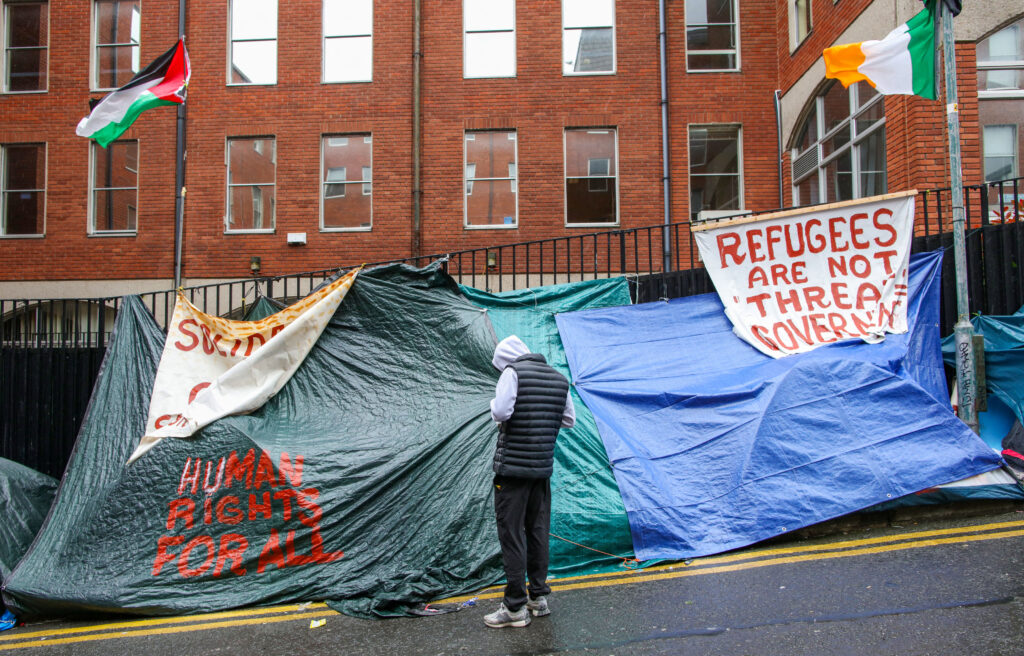Other routes by sea and air aren’t as simple. Although Britain and Ireland have maintained a Common Travel Area for the past century that gives British and Irish citizens freedom to live and work in each other’s countries, police-operated passport controls still operate on the Irish end of U.K. flights to check the right of non-European Economic Area nationals to enter. Crossing by vehicle or train from Northern Ireland has grown increasingly popular once Irish authorities started tightening rules on letting U.K. asylum seekers on to Ireland-bound aircraft.
Over the past year, Ireland’s Department of Integration and the International Protection Office have struggled to source enough shelter for 100,000 Ukrainian war refugees and at least 30,000 asylum seekers already here, amid a national crisis in housing supply and affordability. A string of derelict properties earmarked for development as asylum centers have been burned down in suspected arson attacks by irate locals. Civil servants toiling to manage the fallout expect pressures to keep building, perhaps to breaking point.
“It’s a madhouse,” said an International Protection Office worker, taking a smoke break outside the office on Mount Street in the Georgian heart of Dublin. Nearby, two groups of men — mostly Somalis to the left, Nigerians to the right — loitered beside rows of tents on sidewalks that had been their home for weeks. “We’ve nowhere to put them all and more keep coming. There’s no end to it.”
Starting a year ago, a tent city had been allowed to take root outside the International Protection Office, snaking along footpaths and alleys down Mount Street. The shantytown eventually spread past the headquarters of a government party, Fianna Fáil, and was growing ever closer to the local European Commission office and the Government Buildings base of Simon Harris, Ireland’s new prime minister.
But at his weekly Cabinet meeting Tuesday, Harris authorized an operation to remove the Mount Street refugees, chiefly to a commandeered conference center on the city’s outskirts, and to a more remote army-style campground featuring 12-man tents.
At dawn Wednesday, a fleet of buses and taxis took nearly 300 men to those emergency facilities while sanitation staff in hazmat suits cleansed pavements of months of public urination and piled-up garbage. Police erected barriers of 1,000-kilogram concrete blocks where the tents had stood and told refugees they’d face immediate arrest if they tried camping on Mount Street again.

